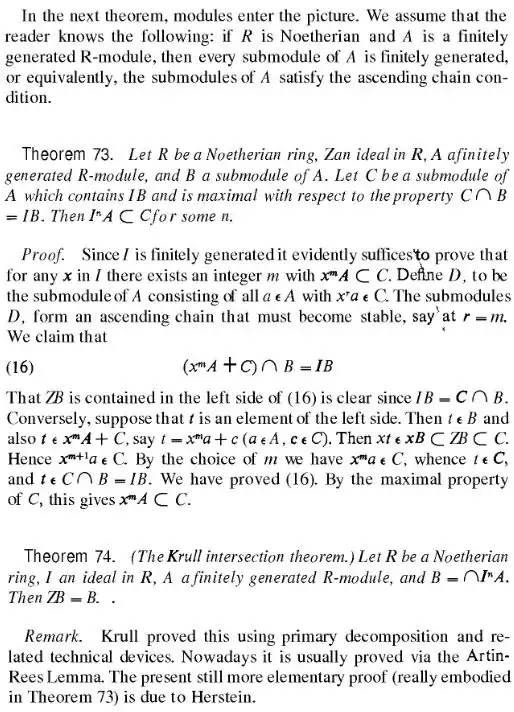I am currently engaged in independent study of algebraic geometry, using Dan Bump's book. One of the exercises in it outlines a proof of the Krull Intersection Theorem, which [here] is the following:
Let $A$ be a Noetherian local ring with maximal ideal $\mathfrak{m}$, and let $M$ be the intersection of all of the $\mathfrak{m}^n$. Then $M = 0$.
The hints direct me to use the Artin-Rees lemma to show that $\mathfrak{m} M = M$, then use Nakayama's lemma to show that $M = 0$ (this second step is easy). I showed this to a professor and he accused the book of using big machinery for no reason, arguing that
$$\mathfrak{m} M = \mathfrak{m} \bigcap_{n \ge 0} \mathfrak{m}^n = \bigcap_{n \ge 1} \mathfrak{m}^n = M.$$
Does this argument work? Does Bump apply Artin-Rees because that argument works in some broader context where the above argument fails?

